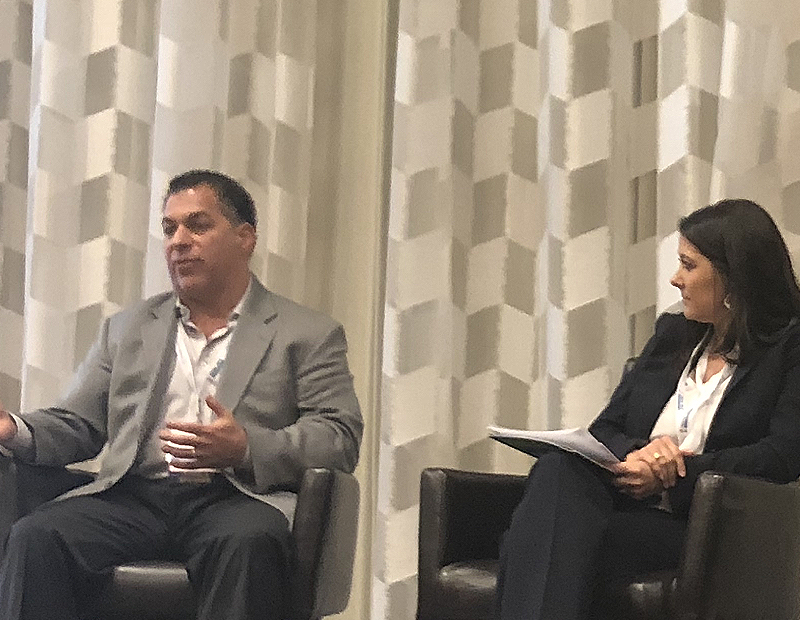Growth Potential in New Construction for PACE Industry
With energy consumption, carbon emissions and climate change becoming more pressing issues, many panelists at PACENation Summit in Austin were optimistic about C-PACE's future.
To date, most projects using Commercial Property Assessed Clean Energy (C-PACE) financing have been retrofits and gut rehabs but many attendees at the PACENation Summit in Austin expressed optimism about the future growth of C-PACE for new buildings.
C-PACE, the financing mechanism which uses property tax assessments to repay loans for green energy efficiency and generation projects, has seen impressive growth in the past several years. Most activity in the commercial space has involved retrofits or gut rehabs to older buildings, but it may be new construction that drives the industry during the next decade.
Although only 3 percent of all C-PACE projects in 2017 were new construction, by value the financing for those projects amounted to $77 million, accounting for 31 percent of total volume. Using C-PACE to complete energy projects in new buildings can offer benefits to developers, owners, tenants and the environment. Implementing C-PACE financing in ground-up development brings its own set of challenges, which are reduced by the participation of sponsors and lenders that are familiar with the financing method.
The carrot and the stick
A common refrain at the PACENation Summit was that C-PACE is the carrot, while local building codes are the stick.
For the stick, C-PACE offers developers in locales with strict codes for new buildings an additional tool in the capital stack. Cheaper than most sources of equity used in new construction, C-PACE offers fixed, long-term financing that stays attached to the building upon sale. Recent actions by state and local government, with some announcing ambitious clean energy goals that explicitly mention getting to net zero carbon emission on new construction, indicate that in the near future C-PACE may become essential on order for developments pencil out.
As for the carrot, developers that wish to go above and beyond local codes but find themselves value-engineering out many energy efficiency projects, C-PACE provides the means to bring more ambitious energy components back into a development. Because the financing is typically stable, long-term and fixed, C-PACE helps developers go above and beyond while still minimizing risks. However, many panelists at the conference stressed that need to be both rigorous and honest when conducting energy-saving assessments. It is crucial to not go overboard when designing the C-PACE financed portions of a new building. Doing otherwise could spell disaster for the long-term viability of a building and be a stumbling block when obtaining lender consent.
C-PACE financing on new construction can be an intriguing option for all asset classes. Some office or retail tenants, for example, may demand green energy projects as part of larger corporate initiatives to reduce carbon emissions. In multifamily, it is easy to price the tax assessment into rent while also providing residents with cheaper energy costs. With energy consumption, carbon emissions and climate change becoming more pertinent issues, being proactive and including efficient energy or energy generation in new buildings could be helpful over the long run.
However, developers should be cognizant of the fact that some tenants, especially those office and retail spaces with triple-net leases, may also desire energy improvements that they can touch and feel, such as smart thermostats. When leasing in a new building, a tenant will never be able to see what the energy costs would look like without the C-PACE financed projects. Without a proper understanding of the energy and cost savings the building provides, some may be hesitant to sign triple-net leases and pay a C-PACE tax assessment.
Lender consent provides a challenge
The biggest reason that C-PACE has not been more widely utilized to finance energy projects in new construction is that there are many stakeholders in new developments and getting everyone on board with C-PACE can take much time and effort.
One key aspect of C-PACE is that it requires lender consent from the mortgage holder because the C-PACE financing is repaid through a priority lien on the property. This can lead to skepticism on the part of banks and other capital providers, causing long timelines from introduction of C-PACE financing to completion of the energy project. Not only are banks uneasy about financing in a superior position to theirs, but many banks by their nature are large bureaucracies that are slow to accept a new financing tool. This unease can also lead to banks reducing the loan-to-value (LTV) ratio of C-PACE projects out of caution toward an unfamiliar financing source. Furthermore, due to lender consent, CMBS financed projects have even more cooks in the kitchen that must sign off on C-PACE.
These troubles can best be remedied by using a few steps detailed by the panelist during the PACENation Summit’s new construction panel. First, effective communication and coordination between all parties early and often. Second, those in the C-PACE sector must be willing to put in a lot of effort to educate all the stakeholders. Third, the disbursement of funding during the project must be simple. These are solutions that fall almost entirely on the C-PACE industry. Solutions that those at the summit seemed willing to undertake.
The best sign for the C-PACE industry, and one that many touted during the summit, is that once banks and other commercial mortgage providers work with C-PACE on one project, they are, for the most part, more than willing to use the financing mechanism again. This speeds up timelines and the implementation of projects with slightly higher LTVs.
There may be many hills to climb for the C-PACE industry to become more active in the new construction space but the potential for both the industry as well as the commercial property owners and developers is substantial.









You must be logged in to post a comment.